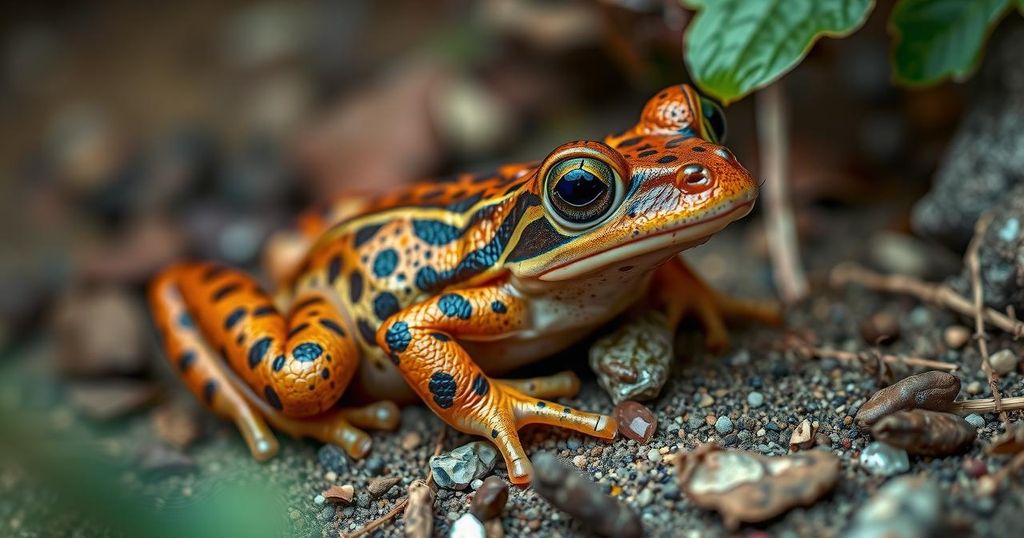The Helmeted Water Toad, one of the largest frog species and a “living fossil,” is experiencing a severe population decline in Chile due to climate change and human activities. Its numbers have decreased by approximately 30 percent since 1990, and it is designated as “vulnerable” by the IUCN. Experts stress the importance of immediate conservation efforts to preserve this ancient species and its habitats.
The Helmeted Water Toad, a remarkable amphibian recognized as a “living fossil,” is currently facing significant threats in its native Chile due to climate change and human interference. This large frog, which can reach lengths over 30 centimeters and weigh up to one kilogram, has remained genetically stable for millions of years. However, a concerning decline in its population, estimated to have dropped by at least 30 percent since 1990, has prompted scientists to classify it as “vulnerable” on the IUCN Red List.
Melissa Cancino, an esteemed veterinarian and founder of Proyecto Anfibia, emphasizes the gravity of the situation, stating, “It’s sad that a species that managed to coexist with dinosaurs, that managed to resist a mass extinction, is now threatened by human beings.” The frog’s habitat is deteriorating due to environmental changes, pollution, and ineffective waste management practices. Additionally, Matias Faundez, another member of Proyecto Anfibia, witnessed firsthand the detrimental effects of illegal runoff into local estuaries, though he noted the tenacity of the frog as it continues to survive in these conditions.
As the Helmeted Water Toad’s environment shrinks and conditions worsen, conservation efforts are imperative to safeguard this ancient species and its habitat from the ever-increasing impacts of climate change and human activities.
The Helmeted Water Toad, scientifically significant for its ancient lineage alongside dinosaurs, represents a critical species within the amphibian class. Its persistent existence over millions of years has been overshadowed by modern-day challenges, predominantly climate change and habitat destruction. This amphibian’s decline is connected to broader environmental issues such as pollution and unsustainable water management practices. Understanding the specific threats facing the Helmeted Water Toad is essential in raising awareness and prompting necessary conservation measures.
The plight of the Helmeted Water Toad illustrates the stark reality of species endangered by human actions and climate change. Despite its historical resilience, this species now faces a perilous future. The observations and insights from experts such as Melissa Cancino and Matias Faundez highlight the urgent need for conservation efforts to protect not only the Helmeted Water Toad but also the ecosystems it inhabits.
Original Source: learningenglish.voanews.com






